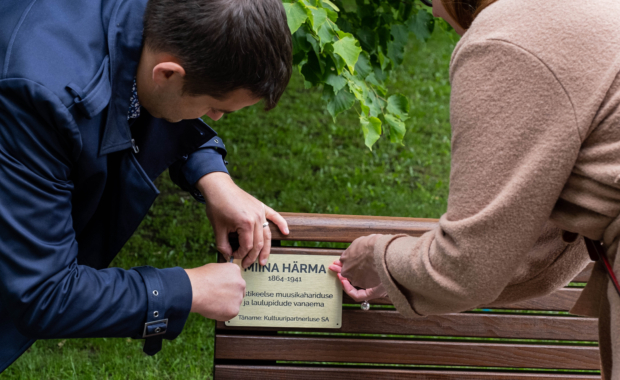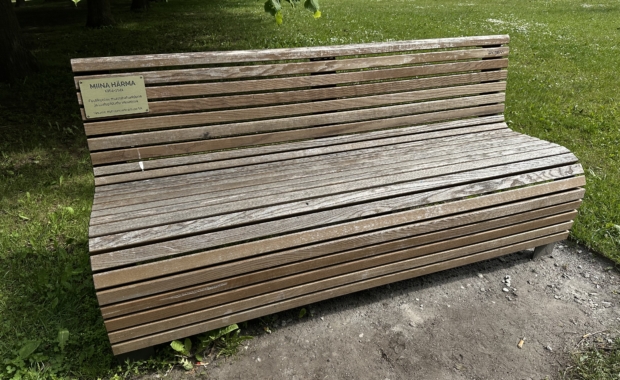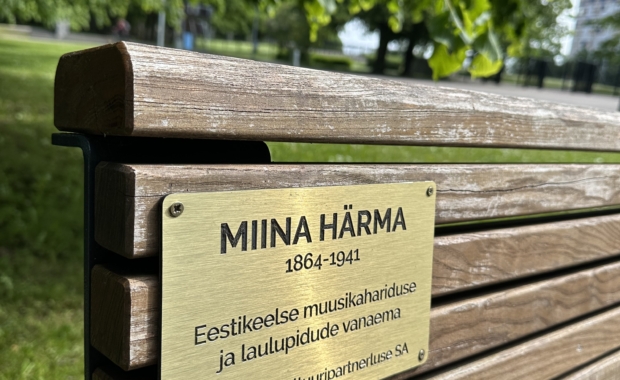Miina Härma
(9. February 1864 – 16. November 1941)
Composer, Choir Conductor, Educator – Pioneer Woman in Music.
Miina Härma was Estonia’s first professional female composer, the first female organist, and the first prominent female choir conductor.
She received her initial musical education at home and from Karl August Hermann, whom she met as a teenager while listening to rehearsals of the “Vanemuine” mixed choir. She studied piano under Ernst von Knorre. In 1880, she composed her first choral work, “Isamaa, õitse sa!” (“Fatherland, May You Flourish!”). From 1883 to 1890, she studied organ at the Saint Petersburg Conservatory (in Louis Homilius’s class), harmony with V. Siecke, and counterpoint and fugue with Julius Ernst Christian Johannsen.
After completing her studies, Miina Härma worked in Saint Petersburg as a piano teacher and choir conductor, and she also founded an Estonian children’s choir there. She performed as an organist in Estonia, Saint Petersburg, England, Finland, and Germany. From 1894 to 1903, she lived in Tartu, where she founded a mixed choir in 1894 that became one of Estonia’s highest-level concert choirs at the time. The choir performed internationally and participated in the 1896 General Song Festival. Her collection “Miina Härma’s Choral Concert Songs” (Vols. I–II, 1898) included fifteen of her own compositions.
From 1895 onward, she collected folk songs along Estonia’s western coast and organized regional song festivals. Between 1903 and 1915, she lived in Kronstadt, working as a piano teacher and organist, and in 1915 returned to Tartu. From 1917 to 1929, she taught music at the Estonian Youth Education Society’s Girls’ Gymnasium, which has borne her name since 1964. She served as editor-in-chief of Eesti Muusika Kuukiri and was a member of the editorial board of Muusikaleht. In 1919, together with Juhan Aavik and Harald Laksberg, she supported the founding of the Tartu Higher Music School. Härma was honored as an honorary member of numerous choirs, societies, and organizations due to her popular compositions and civic engagement. In 1938, she received the Estonian Red Cross II Class Medal, and 1939 was declared Miina Härma Year in her honor.
The majority of her work consists of vocal compositions, including the musical play “Murueide tütar” (Estonia’s first musical stage work), the cantata “Kalev ja Linda”, over 200 choral pieces, and solo songs. Since 1891, many of her choral works have been included in the repertoire of the General Song Festivals. Between 1894 and 1928, she published ten collections of choral songs and wrote Laulmise õpetus koolidele (“Singing Instruction for Schools”). Today, her best-known work is likely the choral song “Tuljak”, a combination of several folk melodies, with lyrics by Karl Ferdinand Karlson and choreography for folk dance by Anna Raudkats.
A television program “Memories of Miina Härma” (1989) is available in the archives of Estonian Public Broadcasting (ERR), featuring her music.
The texts have been compiled using materials from Estonian Public Broadcasting (ERR) and the Estonian Music Information Centre (EMIC).


